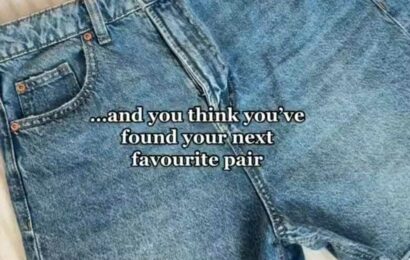NO ONE wants to air their dirty laundry in public if they can help it – which is why dry cleaners always operate with absolute discretion.
Underwear, suspicious stains and suspect repairs – they're the ones that quite literally see everything – and the secrets they keep could no doubt rival a spy.
Tony Chung has been working in the industry for 19 years and owns the Steam Room, working hard advising clients on how to clean and preserve their garments ranging from work to casual wear.
Here, he shares what goes on behind the scenes…
Clean living
Firstly, there's a lot more to the role than meets the eye, and even fashion models need their clothes laundered.
Tony says: "Day to day we do dry cleaning, alterations, repairs, and we provide a lot of services for the fashion industry and fashion houses pre and post fashion weeks.
"After magazine shoots we'll repair and clean the garments ready to be returned too. They usually have a budget to take care of any damage.
"We get busier at Christmas due to the parties – so it's a lot of dinner suits, ball gowns at this time of year."
'Our customers trust us'
It's also not just about cleaning clothes – the job holds a lot of responsibility as many items mean a lot to their owners.
Tony says: "My customers trust me completely and bring in items that mean so much to them – from that suit to their little black dress – so we treat all garments that come in with the utmost respect.
"People often bring in items with huge sentimental value too – their grandparent's YSL couture dress that's been handed down through the generations for example. It's their pride and joy.
"I feel privileged, and feel so proud when I return their items and they're really happy with the finished result.
"They know if they give me their items they'll get them back in great condition. Our customers trust us and that means so much."
Stain relief
It's also a skilled profession, and workers get better and more knowledgeable about stains and how to treat them with experience.
Tony says: "Every garment that comes in goes through a process where we establish what the best treatment is before starting.
"We assess what comes in. A lot of items can't be dry cleaned or washed, and you need to know this before starting as if you do the wrong treatment it could make a problem worse.
"Blood for example is a really easy stain to remove but it's also tricky once heat is applied. If you have blood on a shirt cold water can remove it, but if you've used hot water it becomes permanent and bonds it.
"Biro is easy but fine liner ink pens are more difficult. Egg is hard to remove if the item is dry clean only.
"You need to be patient with the garments that come in, and assess what the stains are first before acting.
"Too hot or too cold can bond particular stains."
A (very) messy business
Some jobs can be more difficult than others – but rest assured, every item is handled with high levels of professionalism.
Tony admits: "Some customers bring in a sealed plastic bag – and that's when I know something really bad has probably happened, but this will always be handled professionally and with complete discretion.
"They've soiled themselves or have been sick for example – there have been situations like that.
"In that instance it's vital that customers are honest about what the stain is.
"Sometimes they're really honest, and some are too embarrassed but it helps me to know what I'm dealing with.
Finding £500 in cash to lost passports
Other than eye-watering 'stains' what common mistakes does Tony see customers make?
He says: "People always leave things in the pockets. From money, wallets, keys to passports – I even found a wad of £500 in notes once.
"Over-washing garments is a mistake I see all the time. A lot of items don't need to be washed as much as they are, like dark denim which can fade."
Meanwhile, at home the average Brit will do approximately 13,000 loads of laundry in their lifetime, but you’re likely to be doing it all wrong.
It’s about keeping the temperature low, and not mixing colours.
Source: Read Full Article












